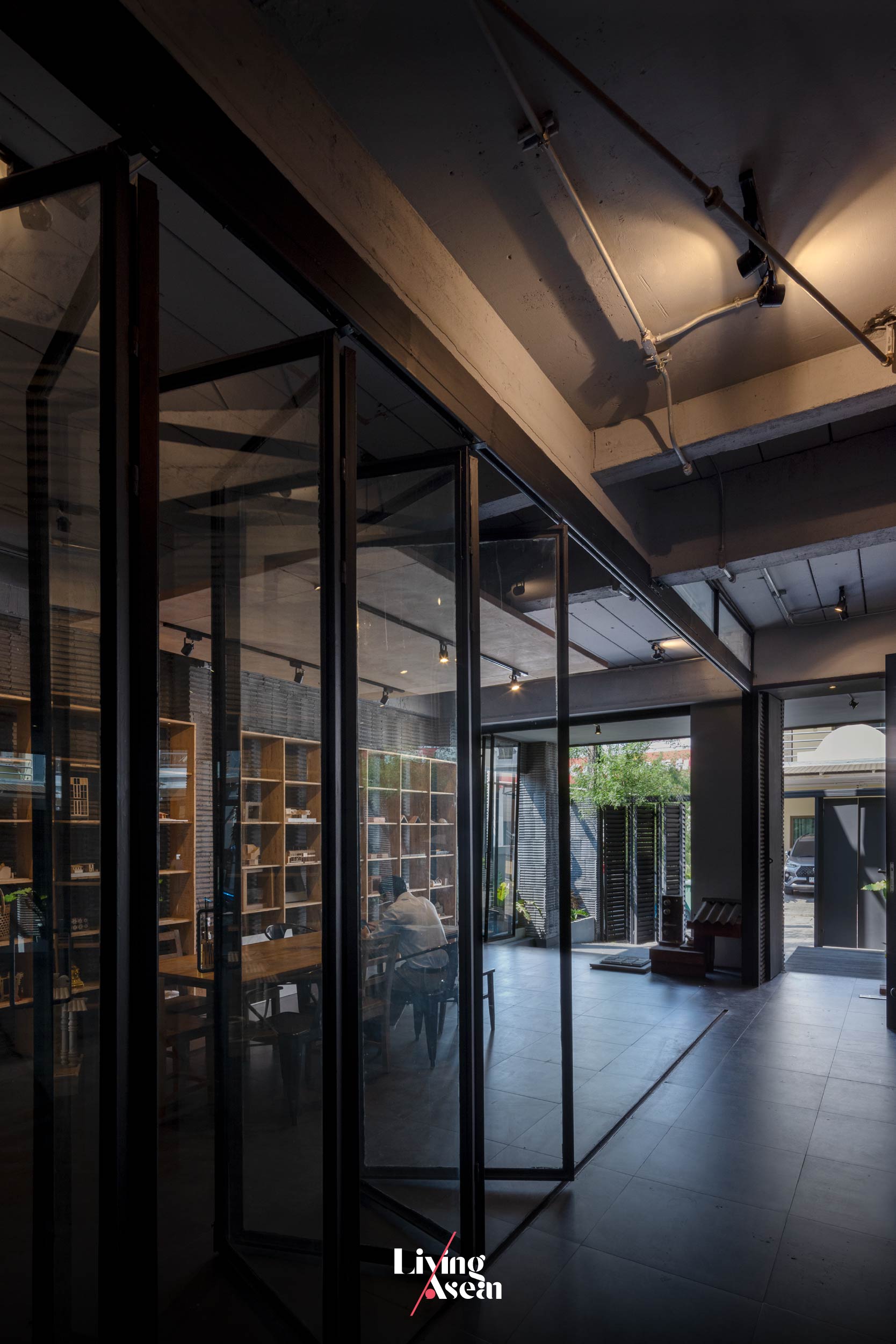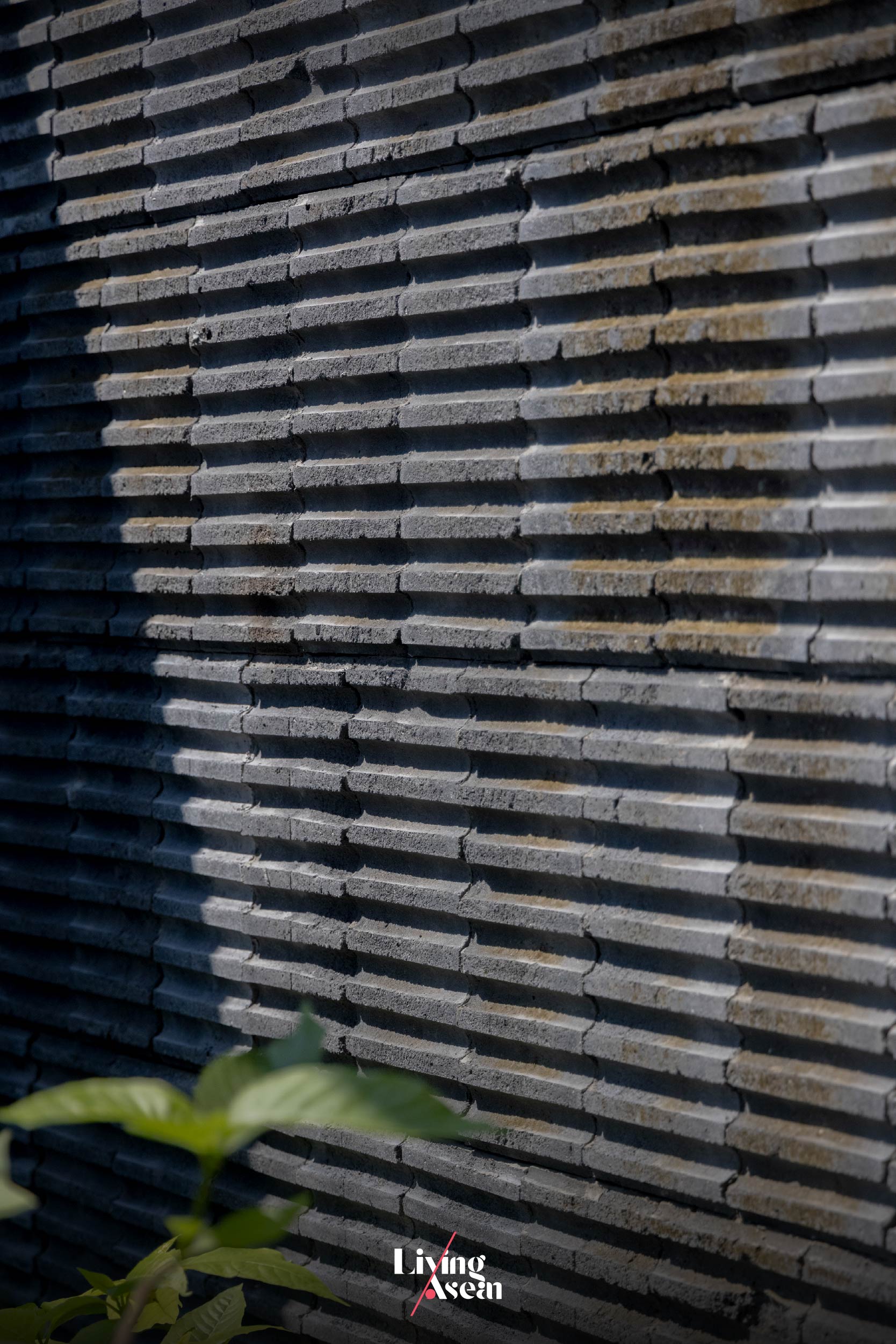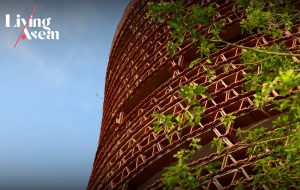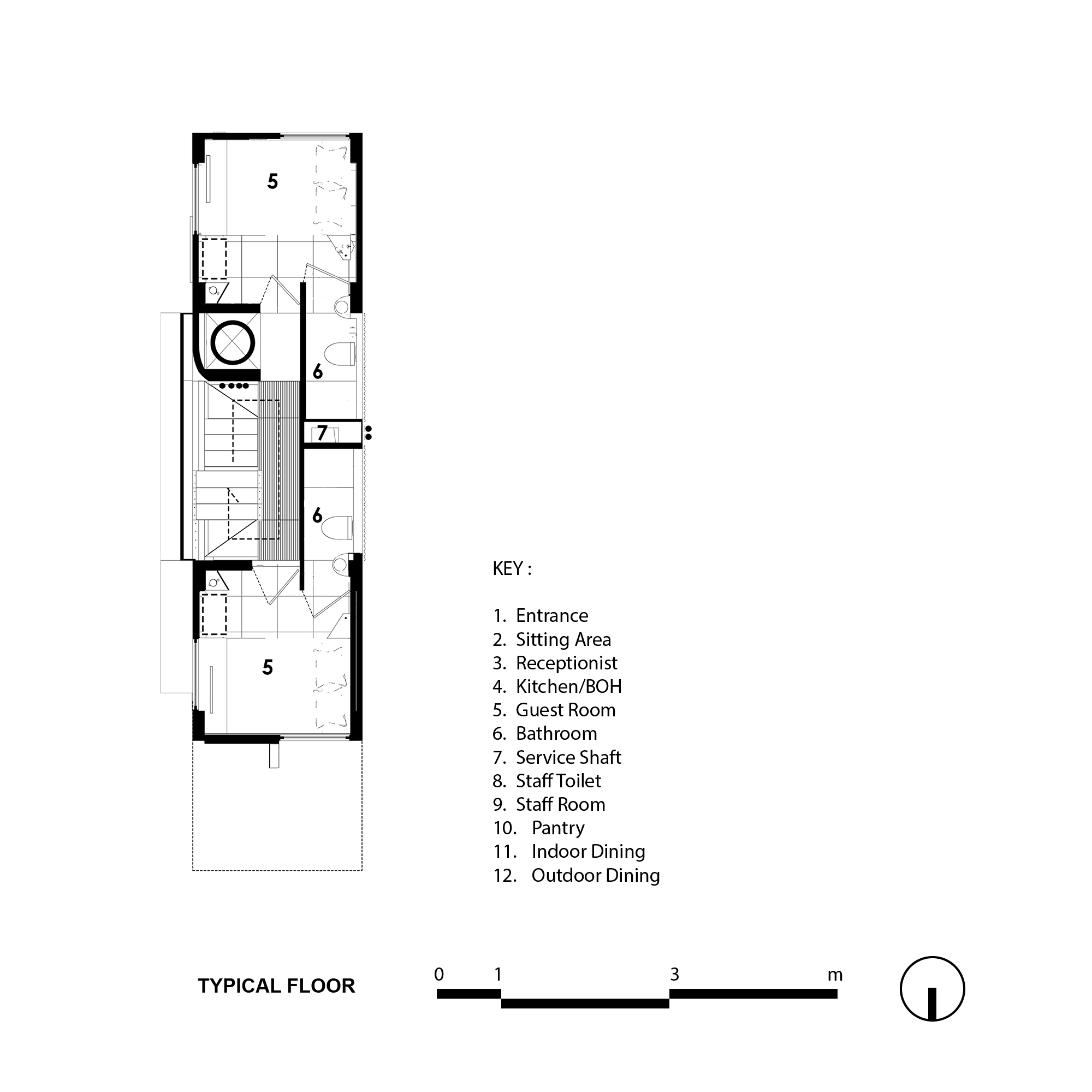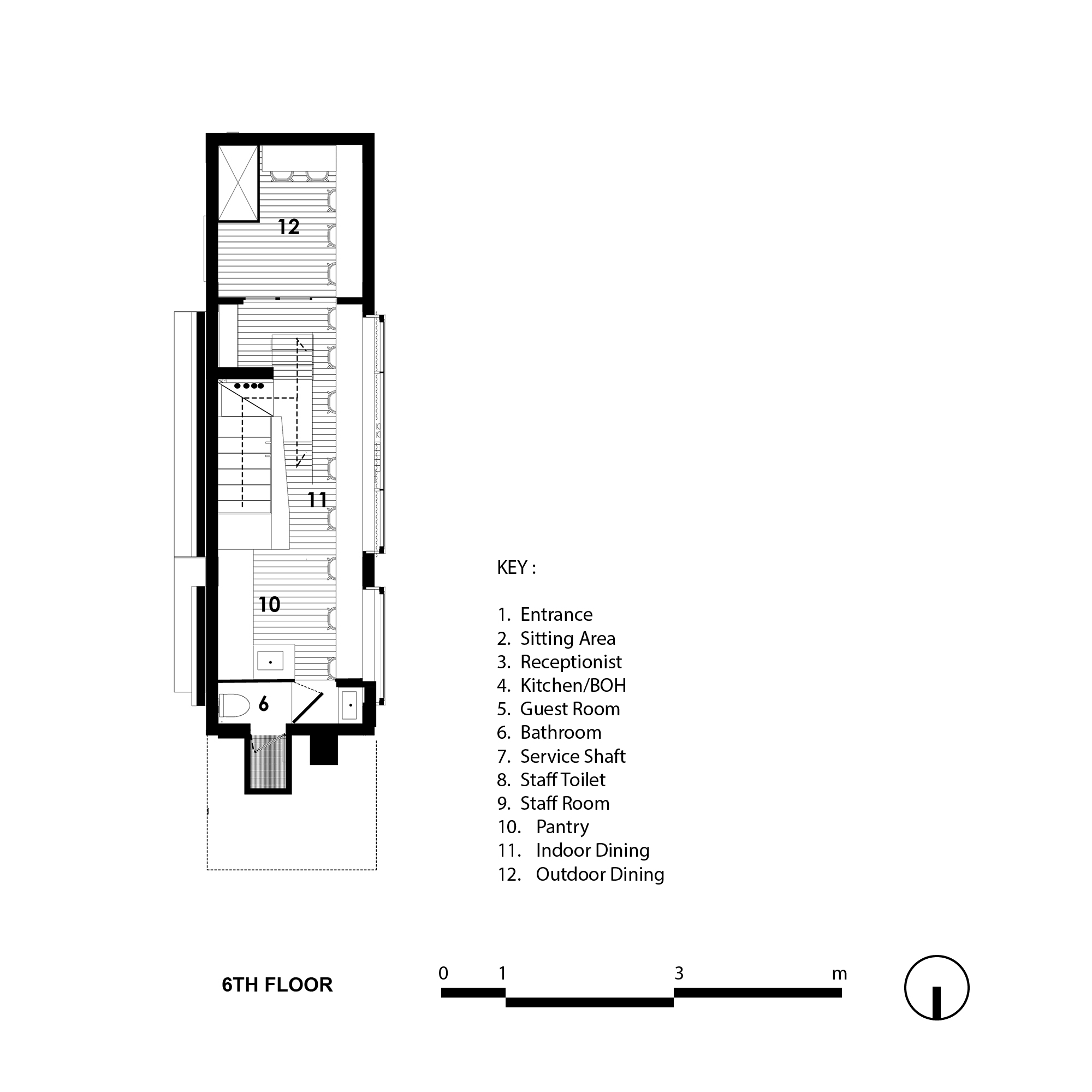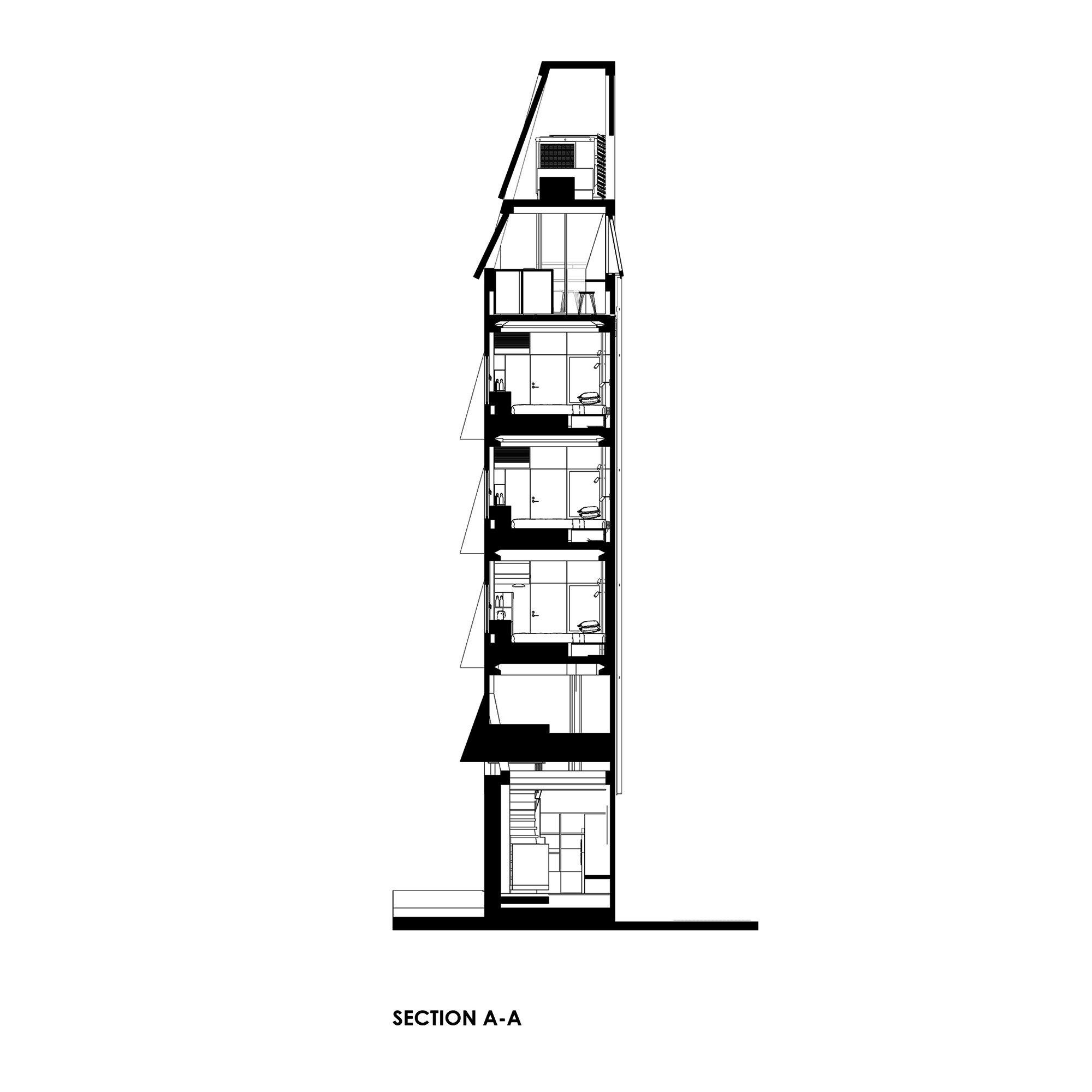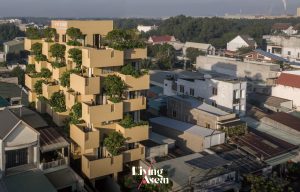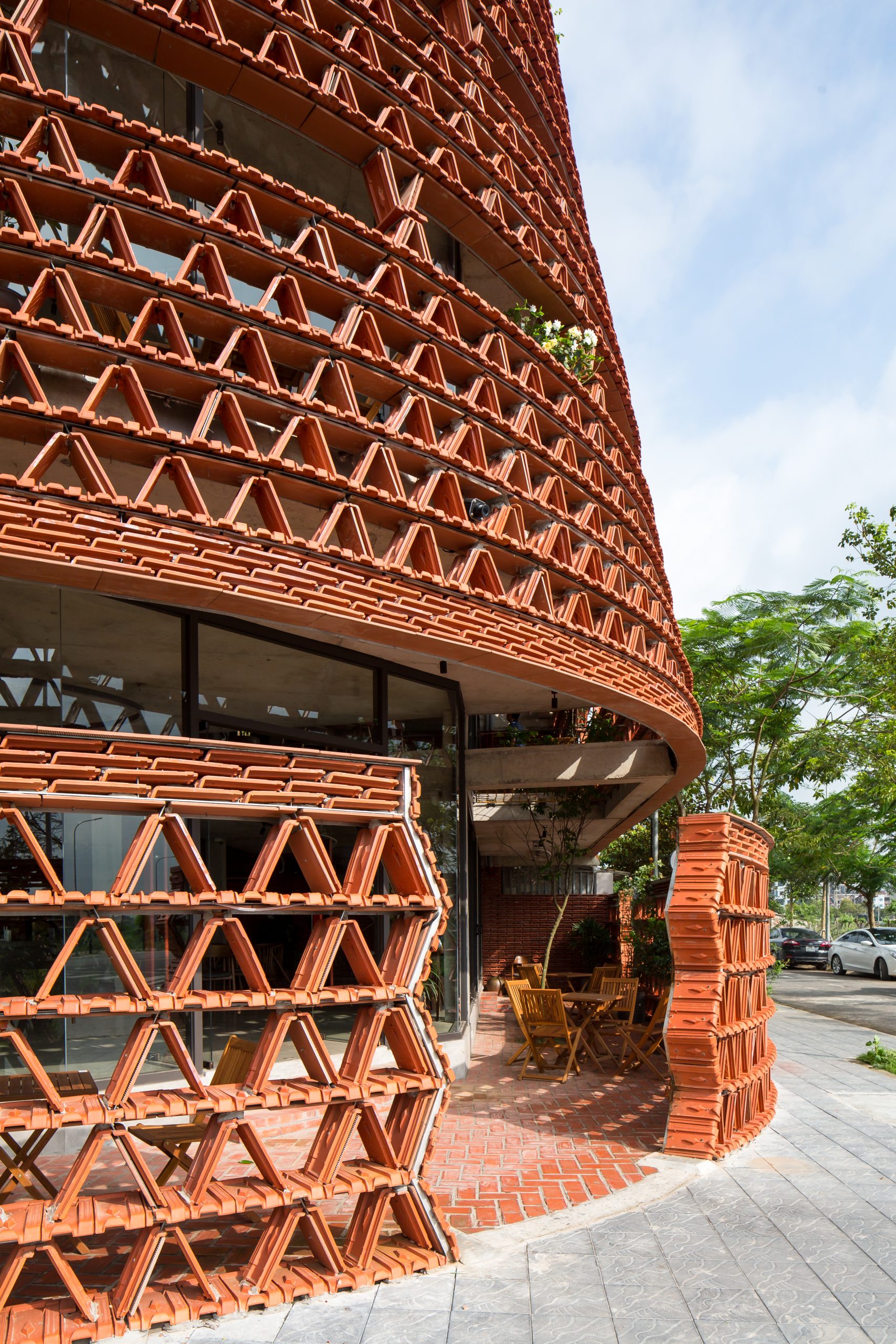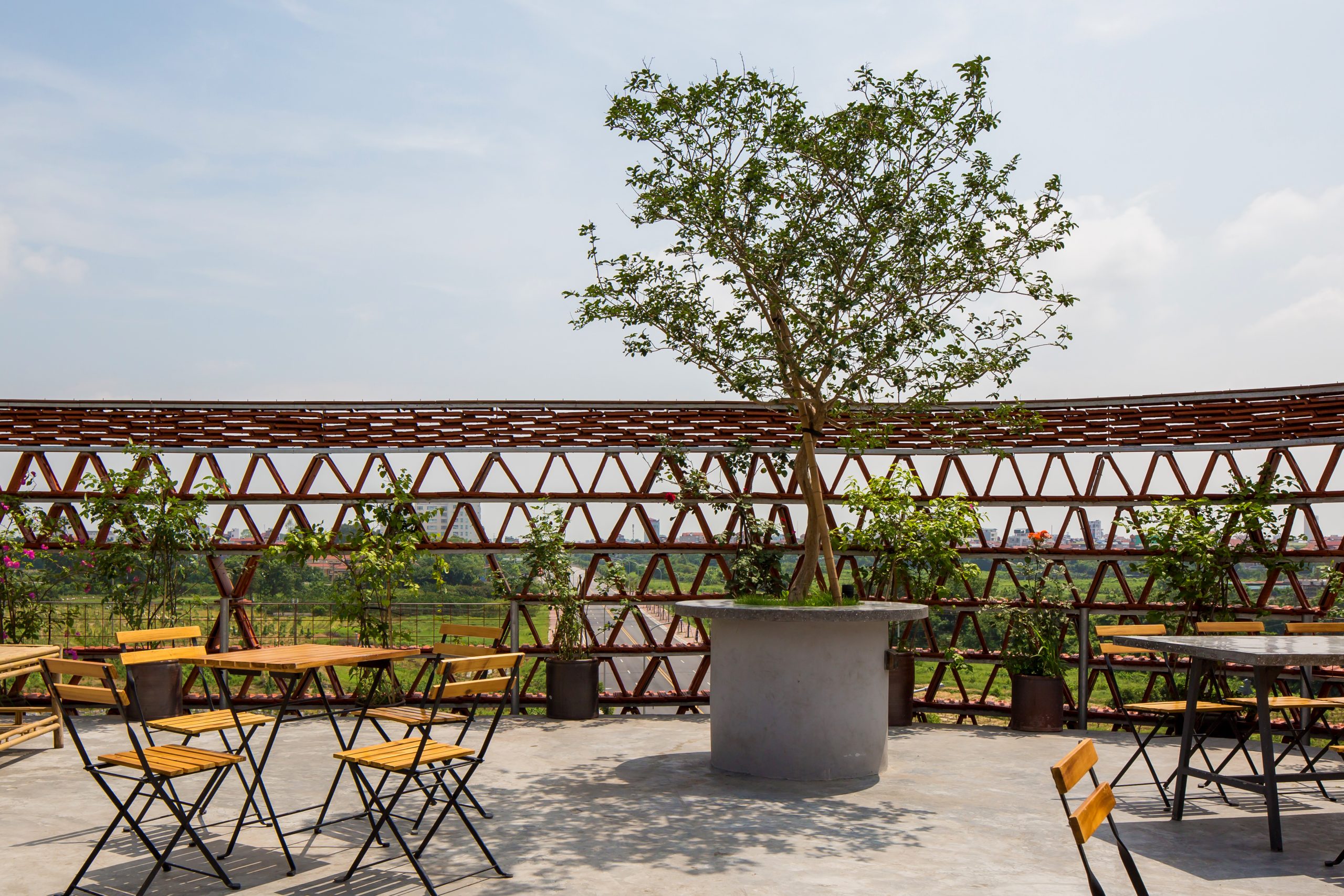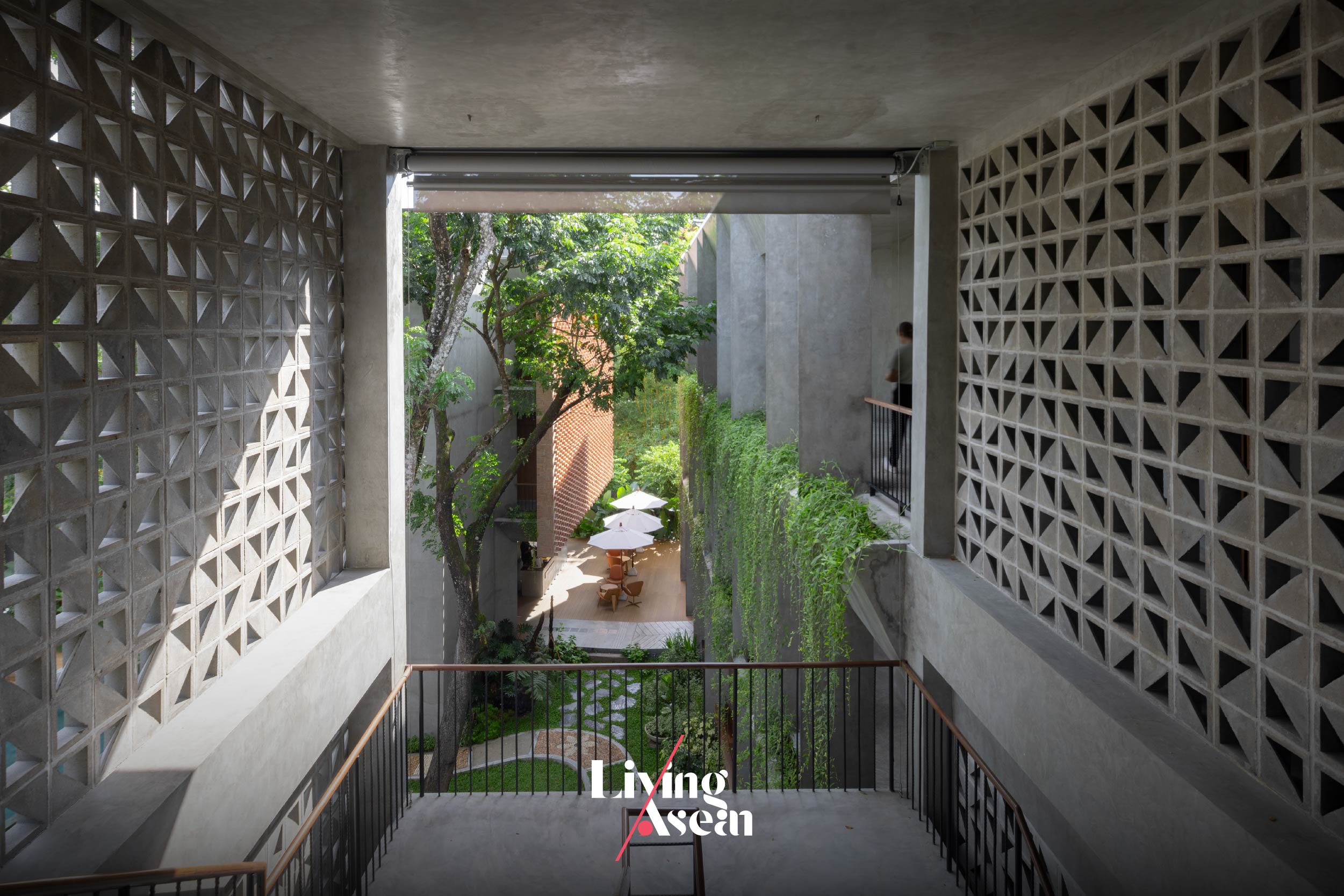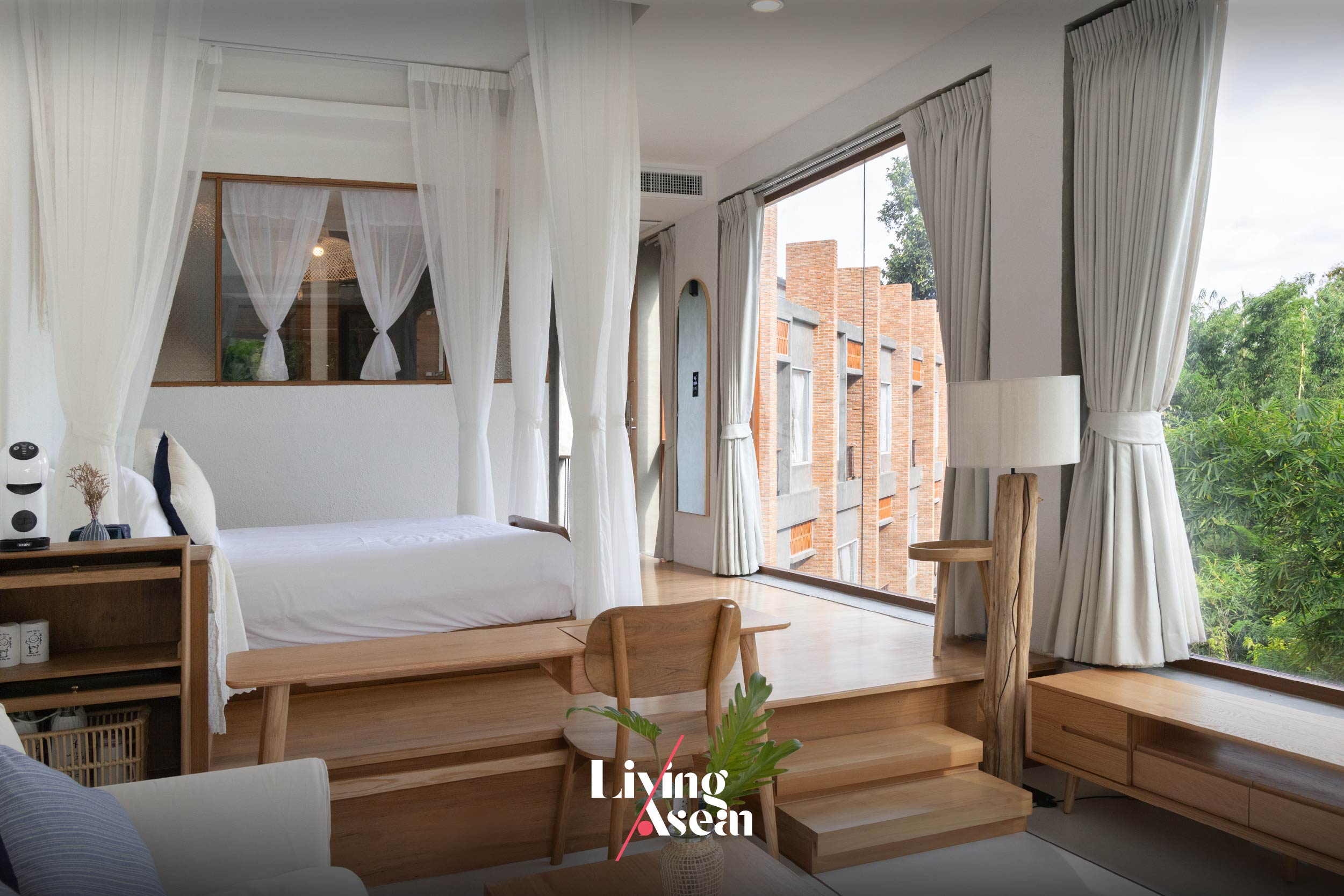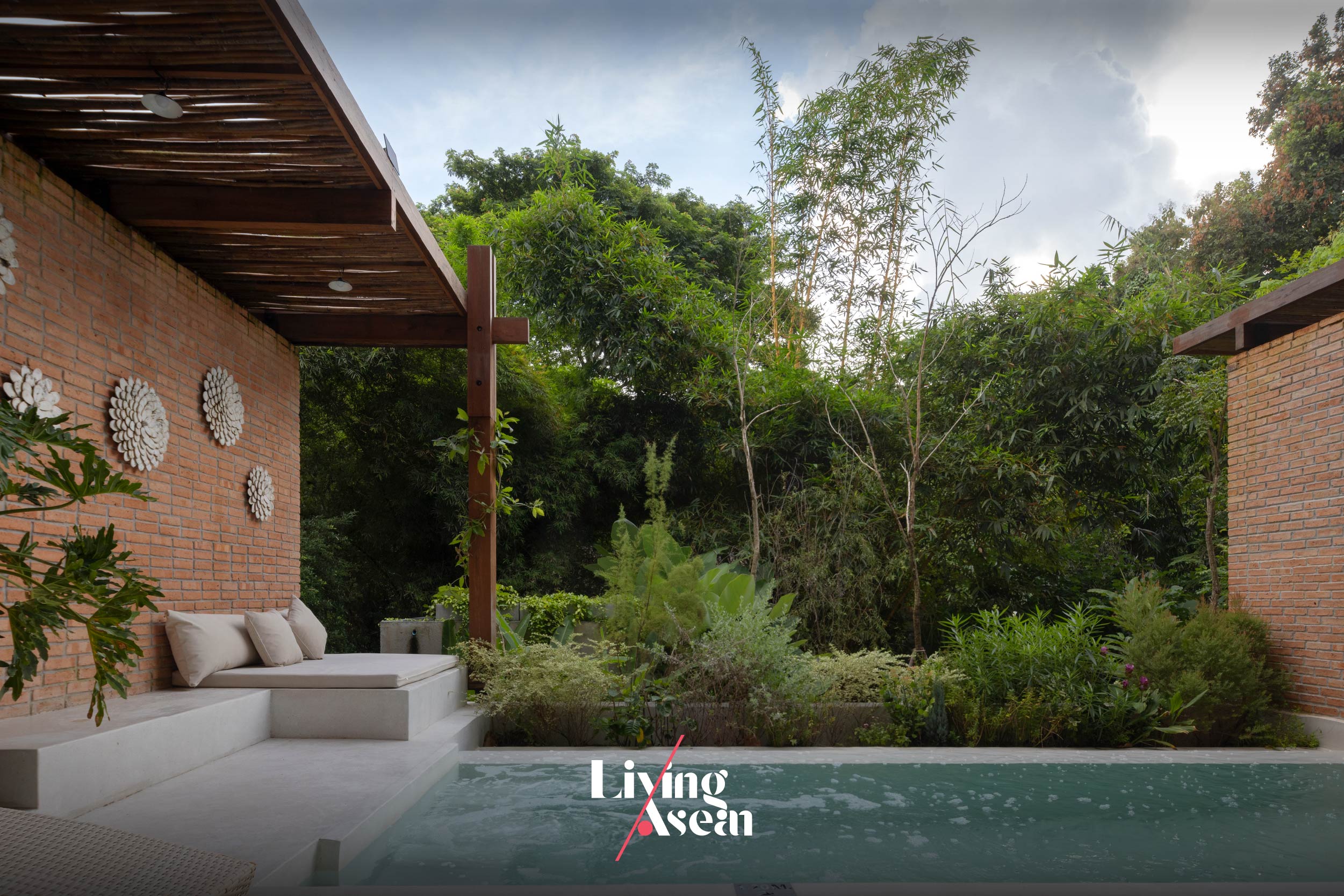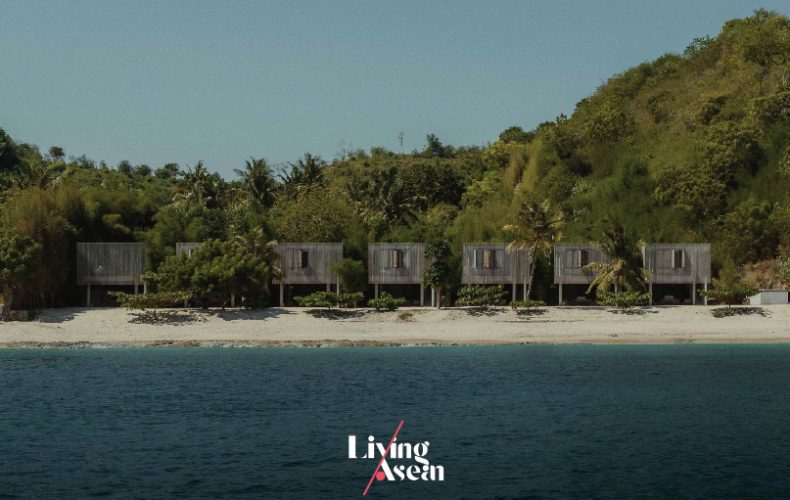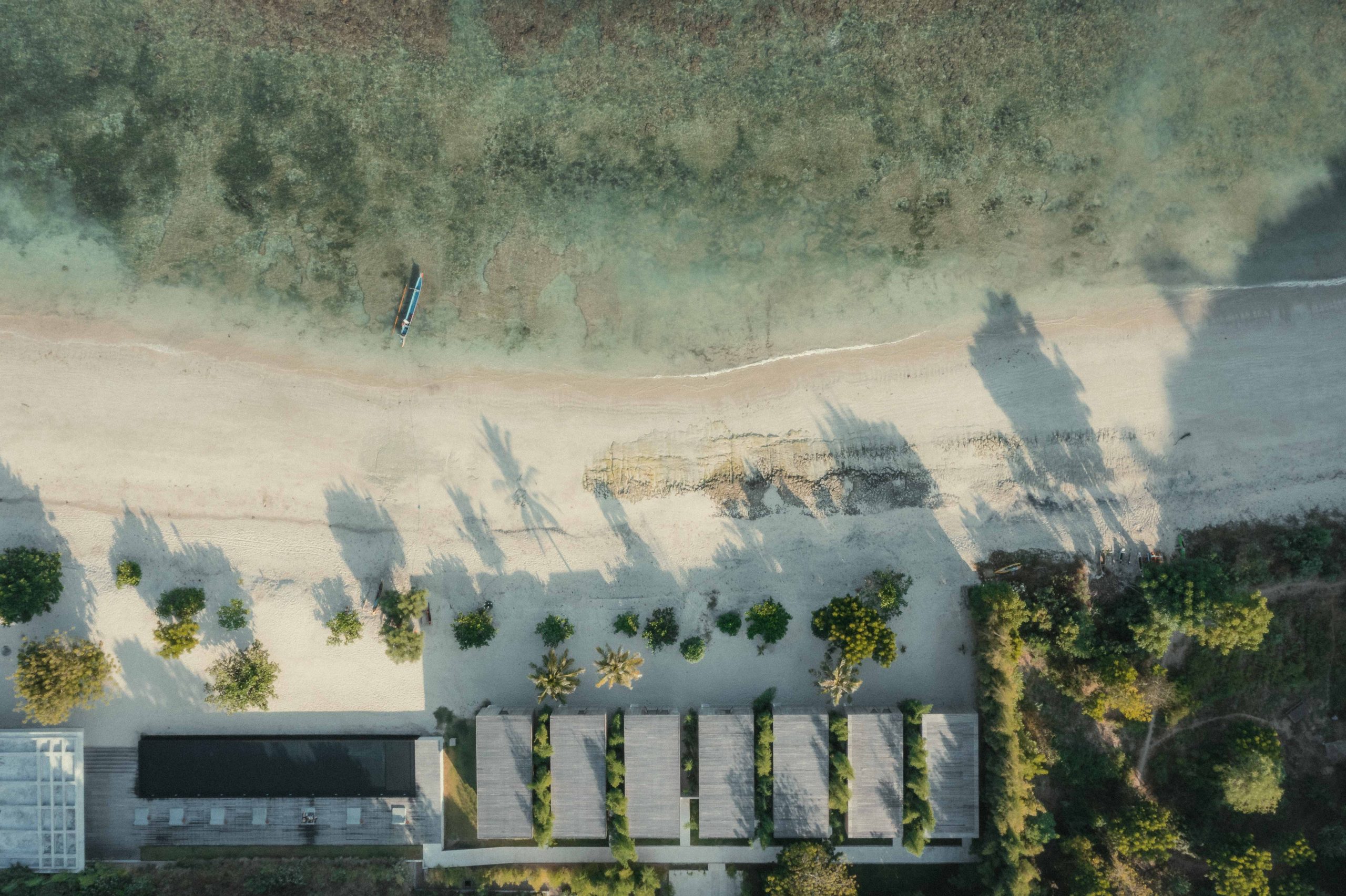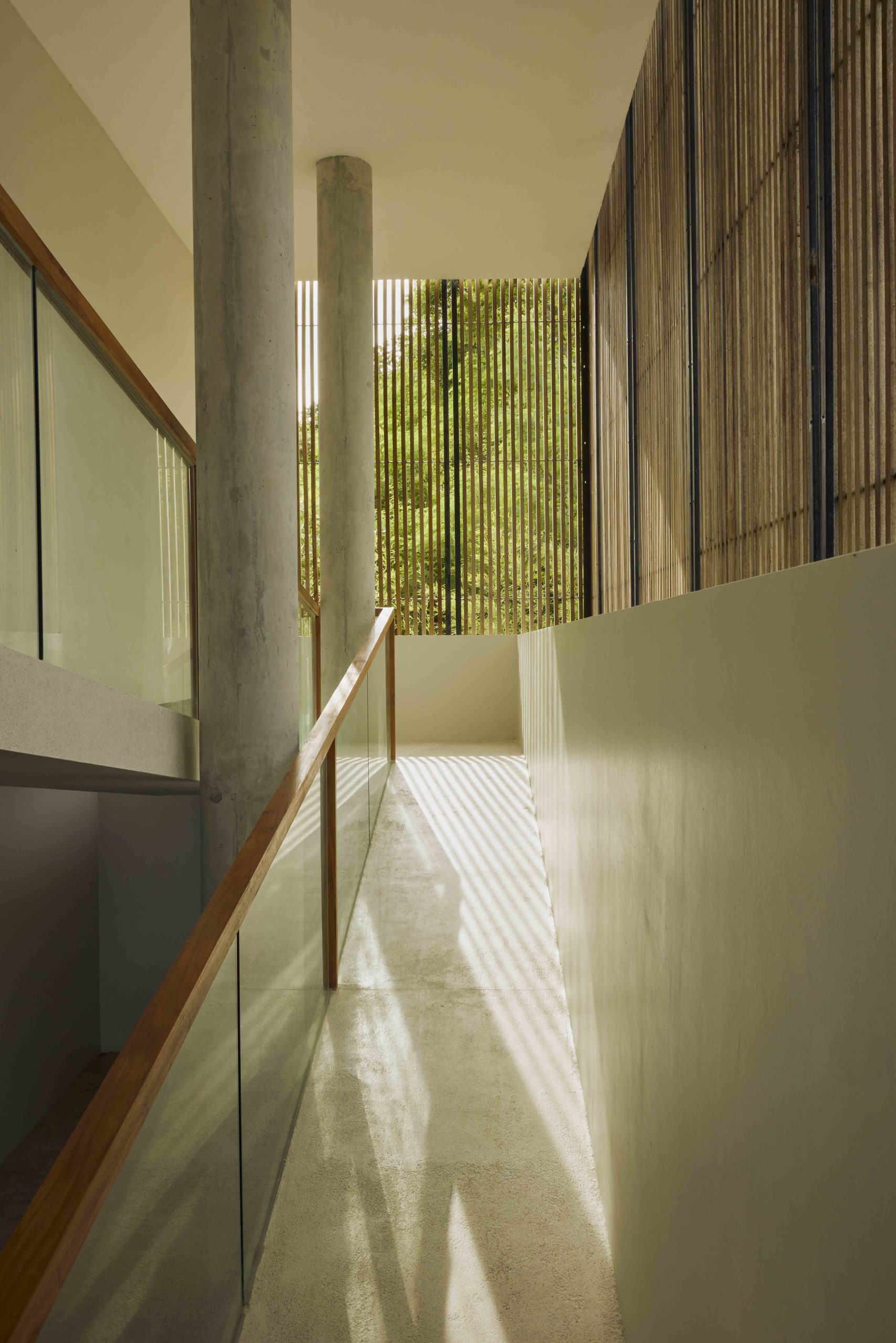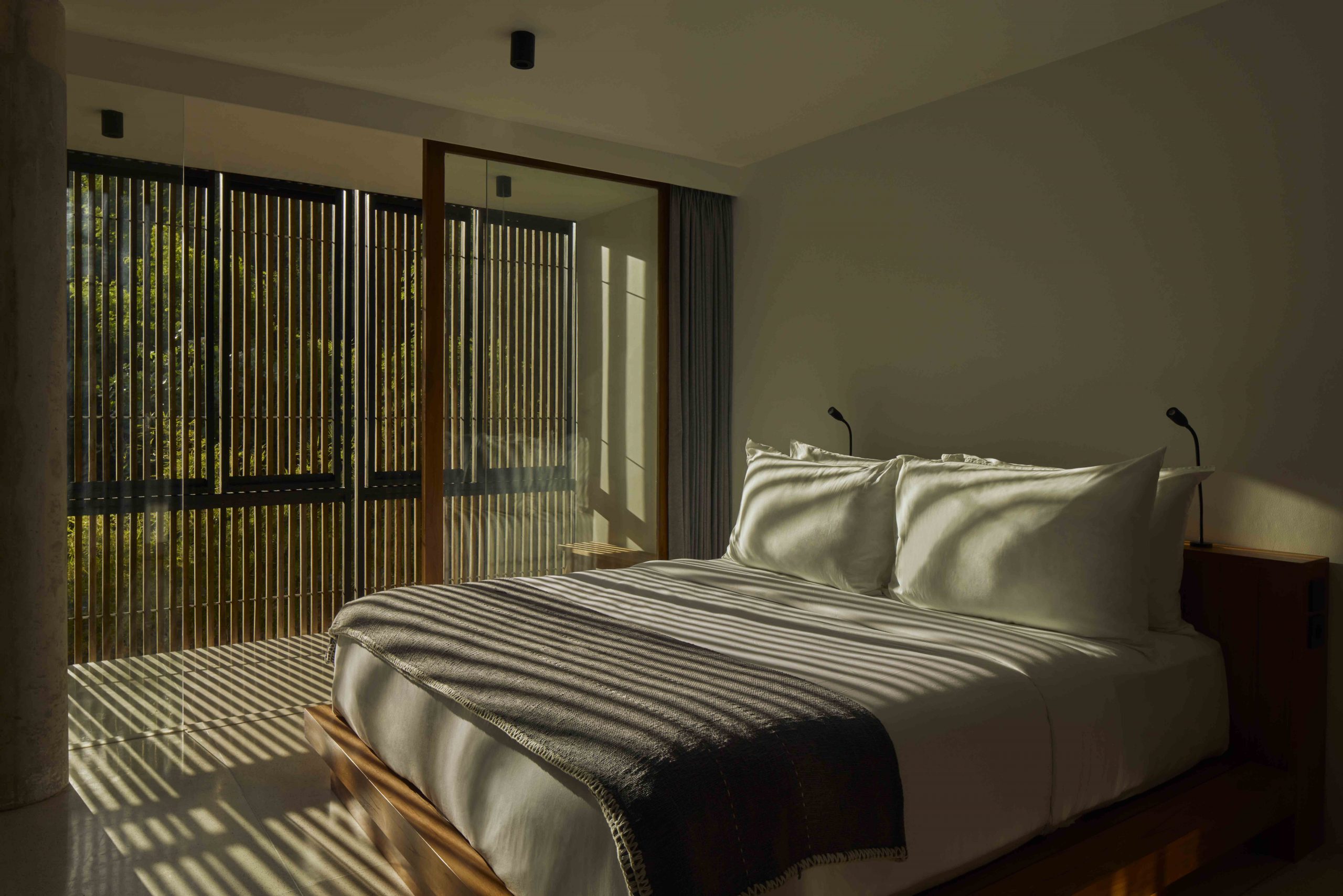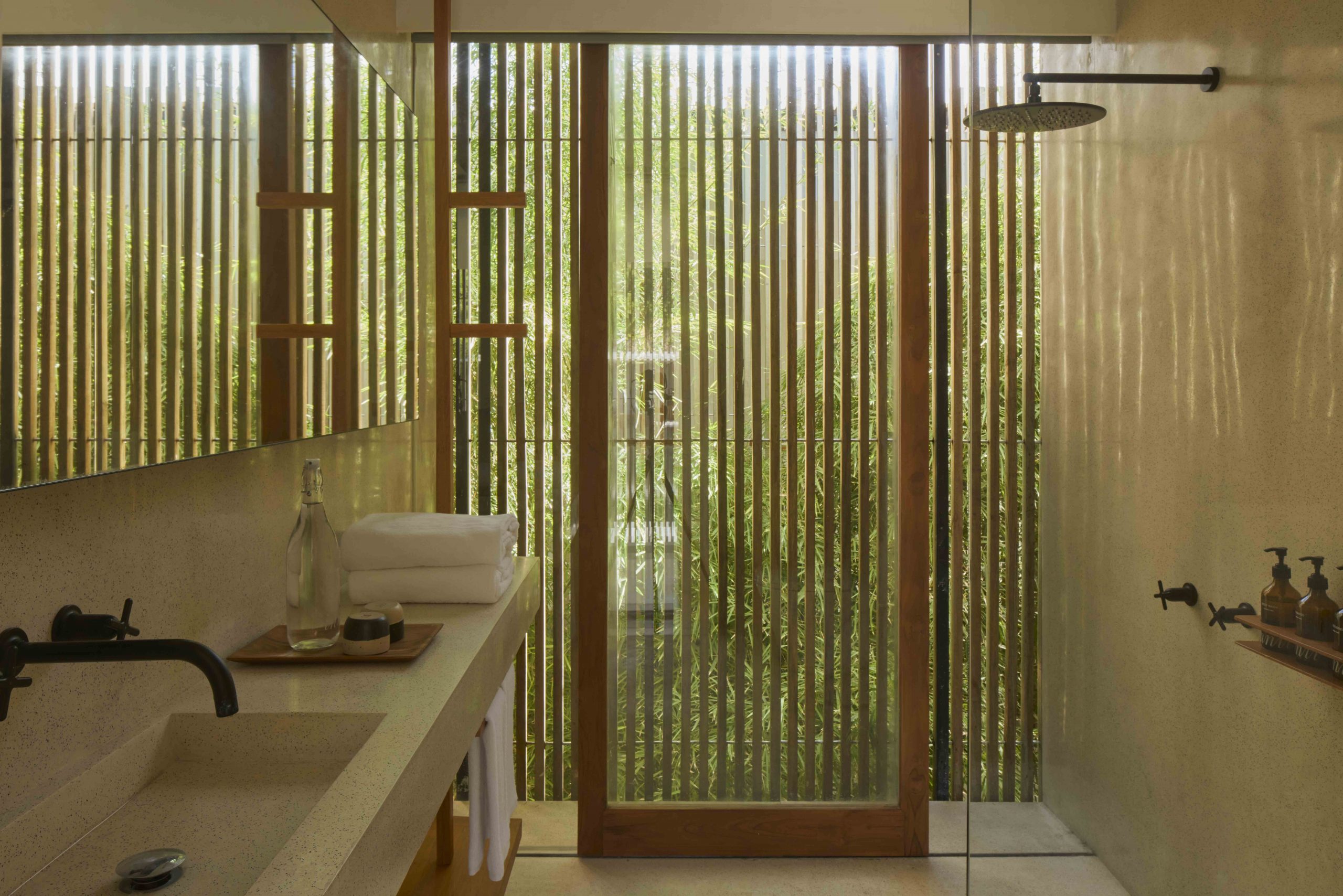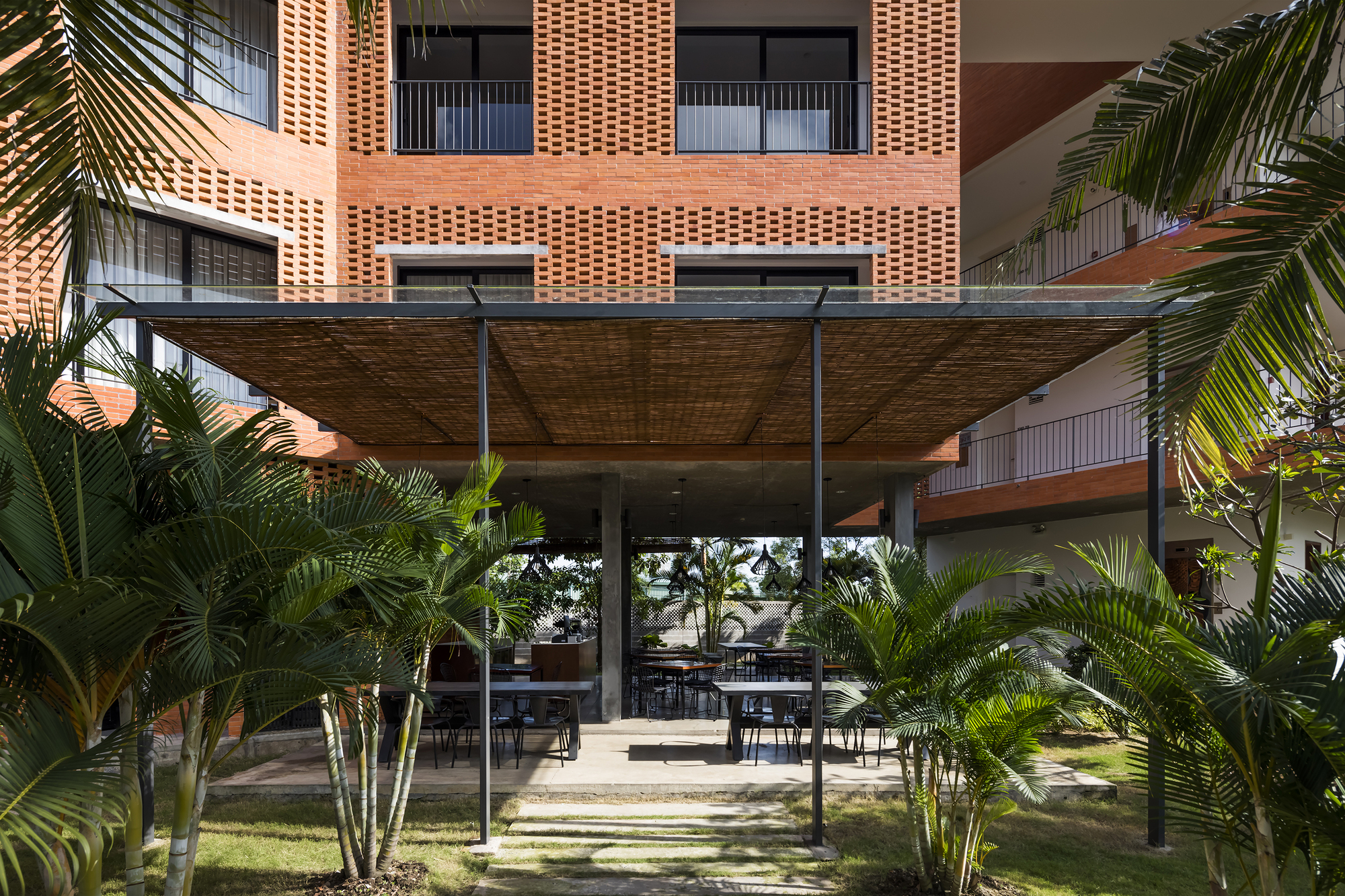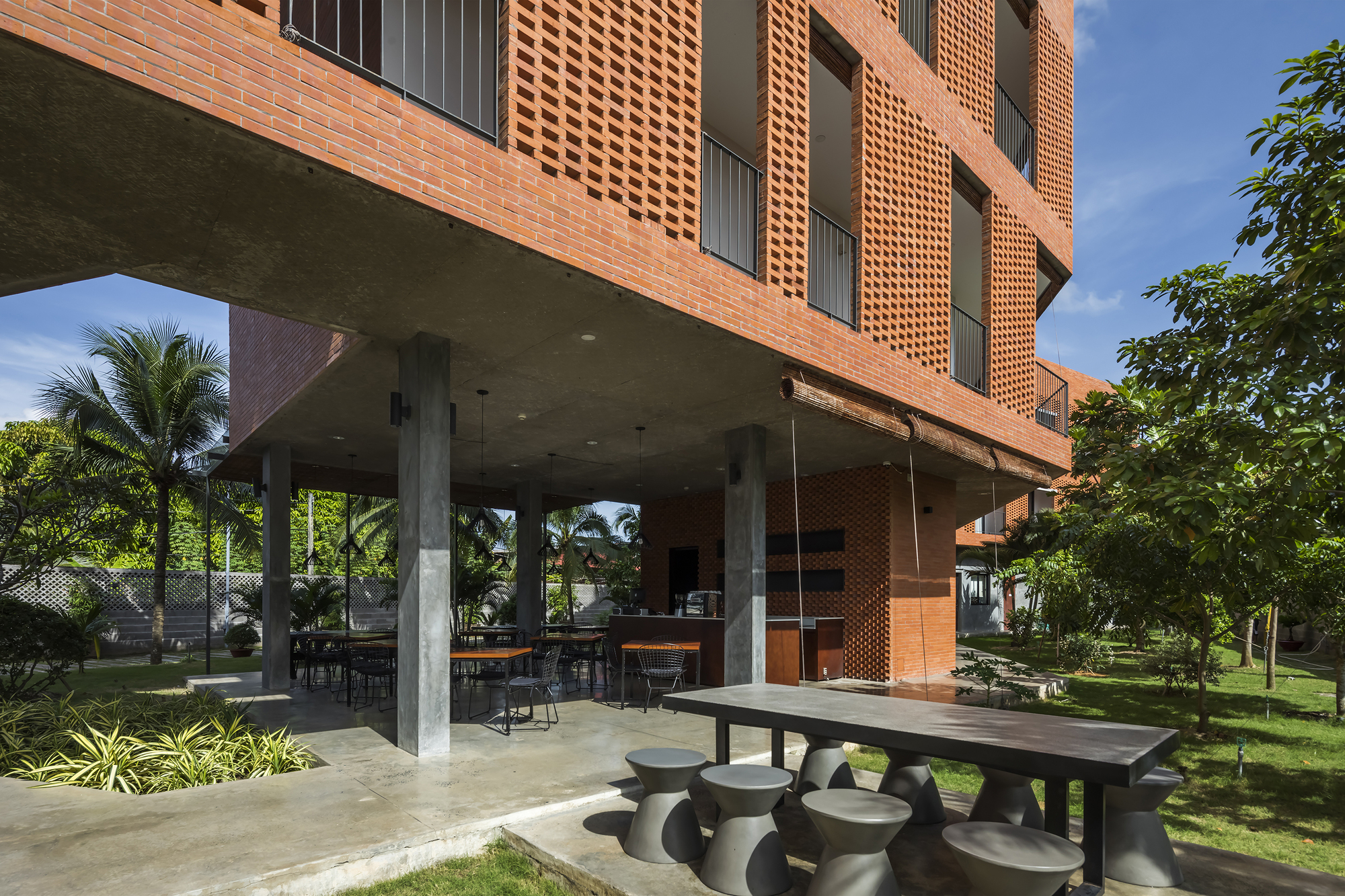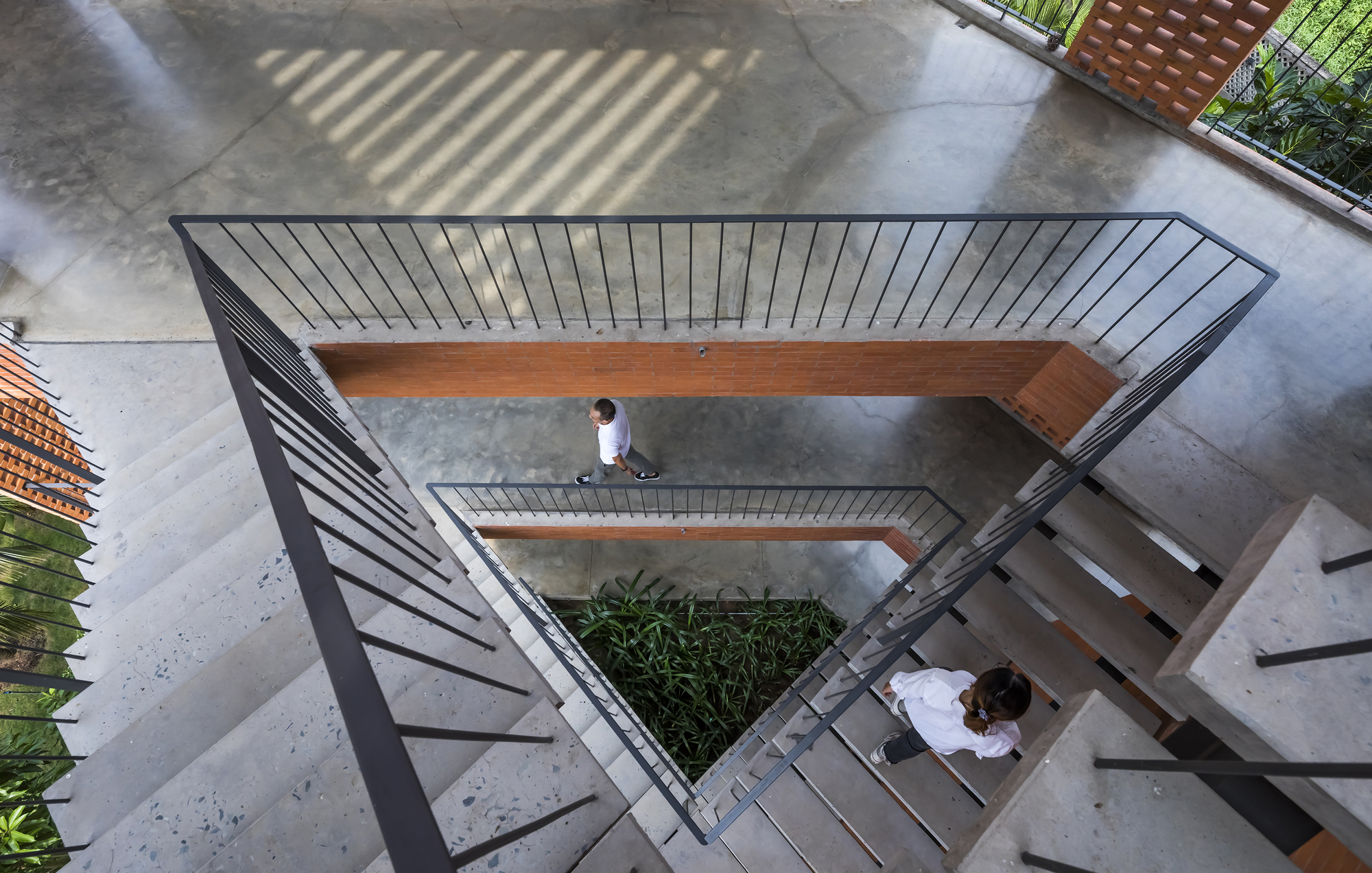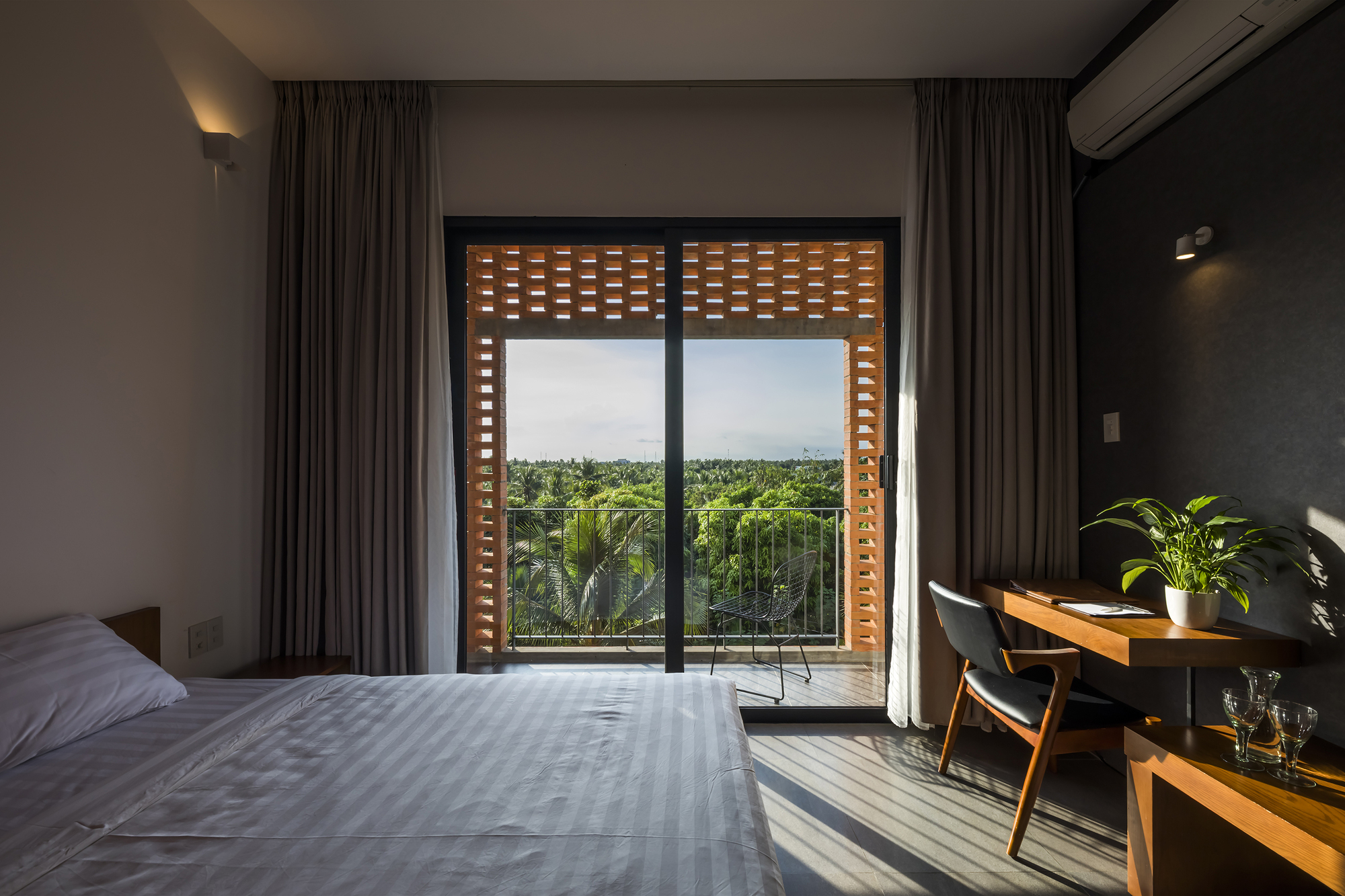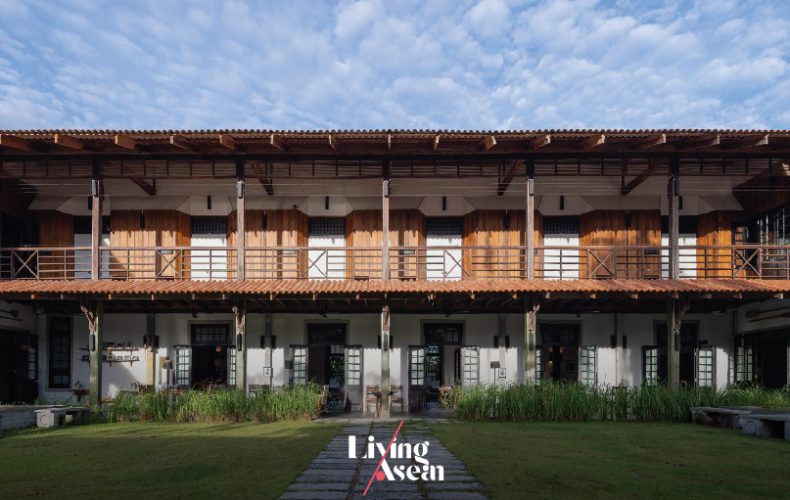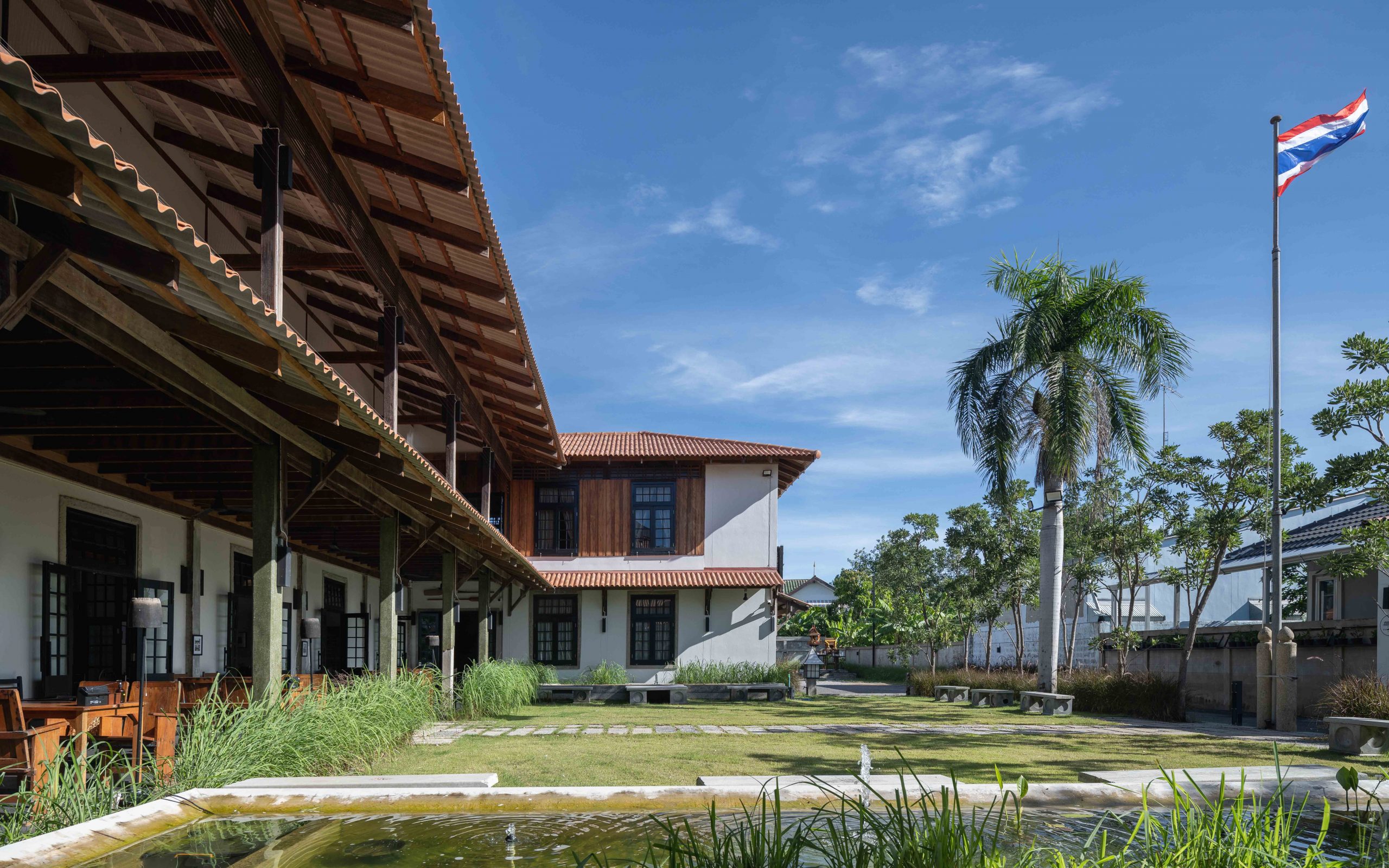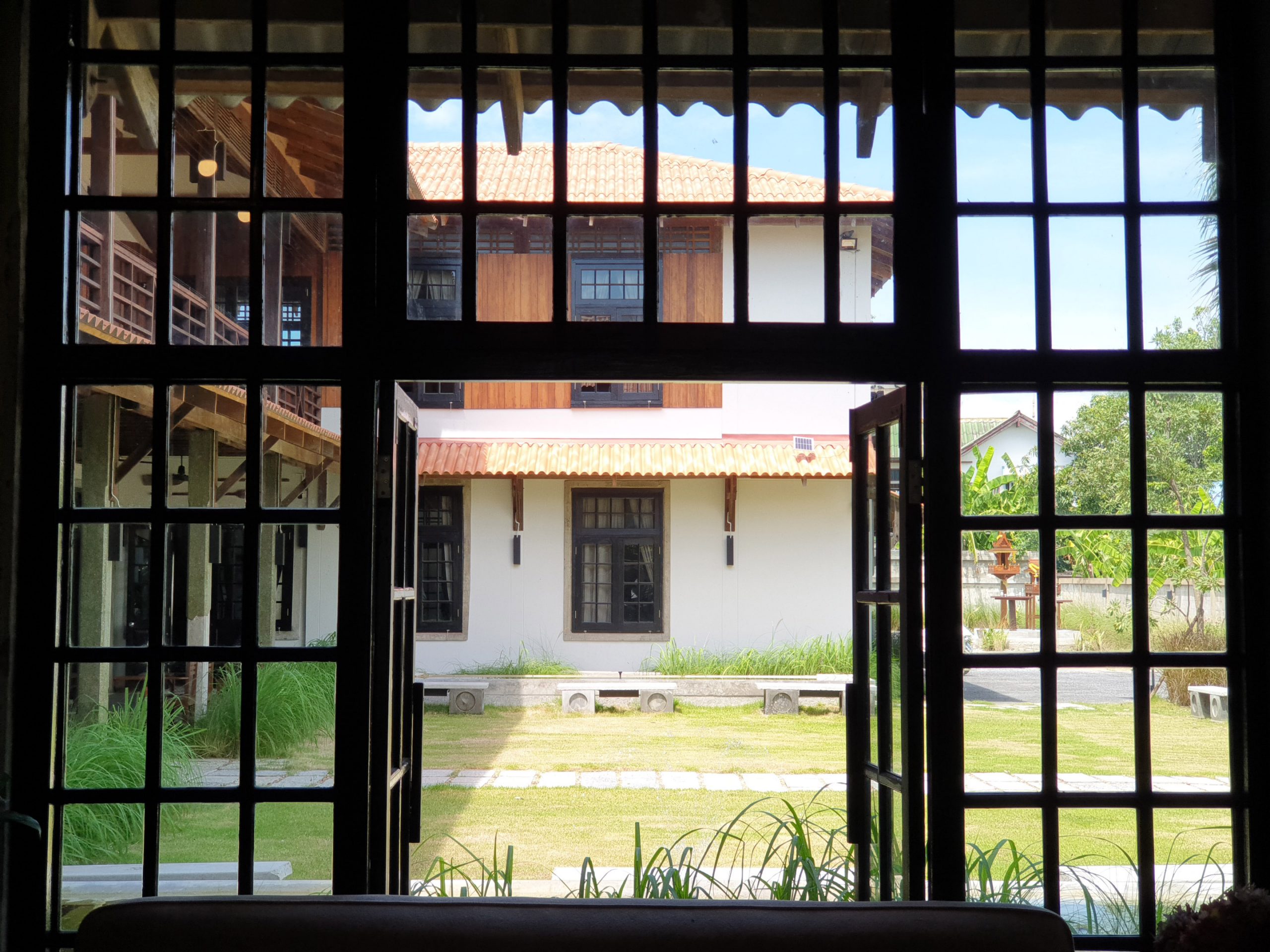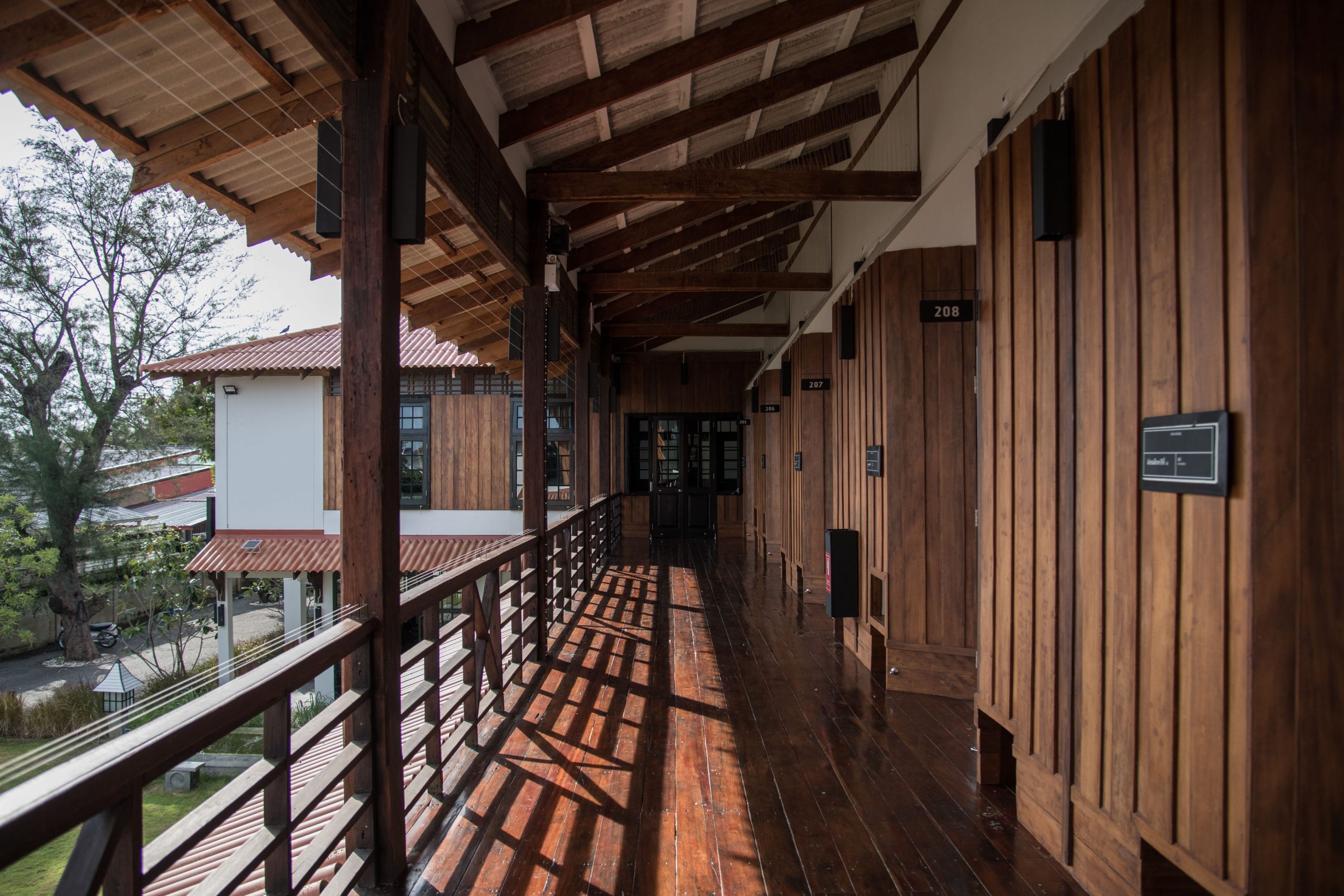/ Central Java, Indonesia /
/ Story: Kangsadan K. / English version: Bob Pitakwong /
/ Photographs: Mario Wibowo /
Central Java, Indonesia – Neat and clean walls rise above a reflecting pool and lush lawns brightened up by shimmering lights. They are made attractive by warm-toned whites and smooth curved lines twirling lightly around like poetry in motion. Shaped into alternate ridges and grooves, the concrete surfaces in zingy warm hues slant up to the skyline reminiscent of a graceful dance. It’s an amazing innovation thoughtfully devised to sync with rhythms in the urban landscape that gives it aesthetic appeal.
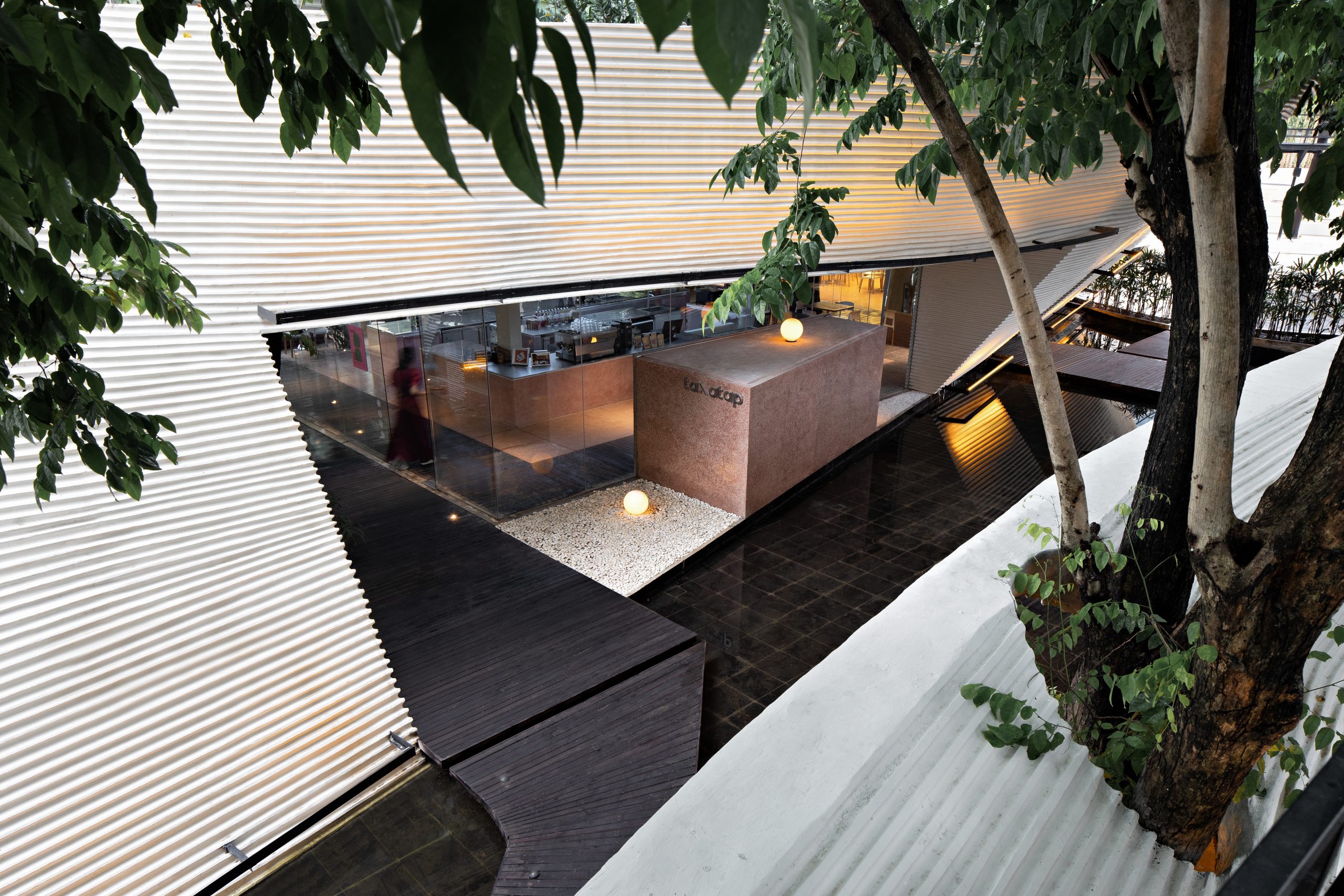
The clean, well-lighted trio of restaurant, café and bar is located in Central Java, an Indonesian province that’s home to the famous Borobudur Temple, one of the greatest Buddhist monuments in the world. Named “Tanatap Wall Garden”, it’s a delightful business space in a class of itself, one that advocates for form and function being joined in a way that requires less energy to operate.
The restaurant-cum-café and bar, together with its land that forms a verdant oasis, affords 2,500 square meters of commercial space nestled among beautiful cityscapes. It’s an all-encompassing design that combines commercial real estate with elements of nature in close physical association to the advantage of both.

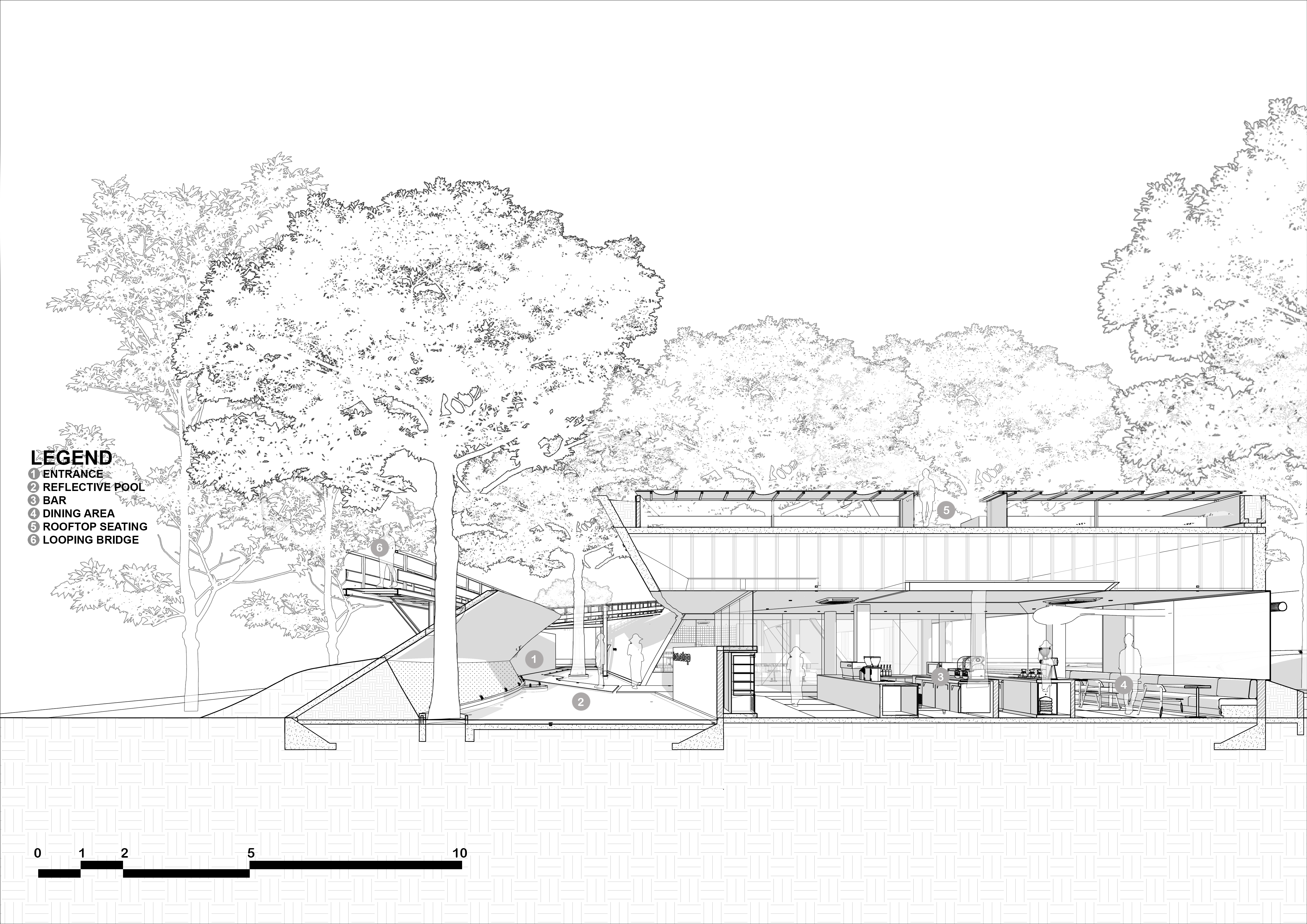
The concept delineated above is the brainchild of a high performing team at RAD+ar, an architectural practice based in Jakarta, Indonesia. The team of architects was tasked with transforming what used to be a parking garage into a calm, secluded garden in which to wine and dine; meanwhile preserving the existing natural environment and the property’s significance as part of a central business district.
The result is a piece of architecture showcasing perfectly clean, white walls rising among very big lush trees, a beautiful sight unlike anything out there. Viewed from above, the floor plan consists of three straight lines on the ground moving centrifugally from the center. Along these lines, concrete walls rise to different heights forming gently curved lines at the very top as they traverse among stands of homogeneous trees.

Apart from bringing shade and regulating temperatures, the trees growing wild in every direction give the business premises charm, good looks that please the senses and the mind.
It’s design that comes from understanding the warm, humid climate prevailing in Central Java, and the company’s principles advocating for simple and sustainable lifestyles. Together they are the key attributes that make Tanatap Wall Garden one of the most agreeable places to be.
For a good first impression, the welcoming entryway is adorned with green spaces that create positive moments in people’s lives. It’s connected to a pathway system leading to cool and restful places amid the beautiful backyard landscape.

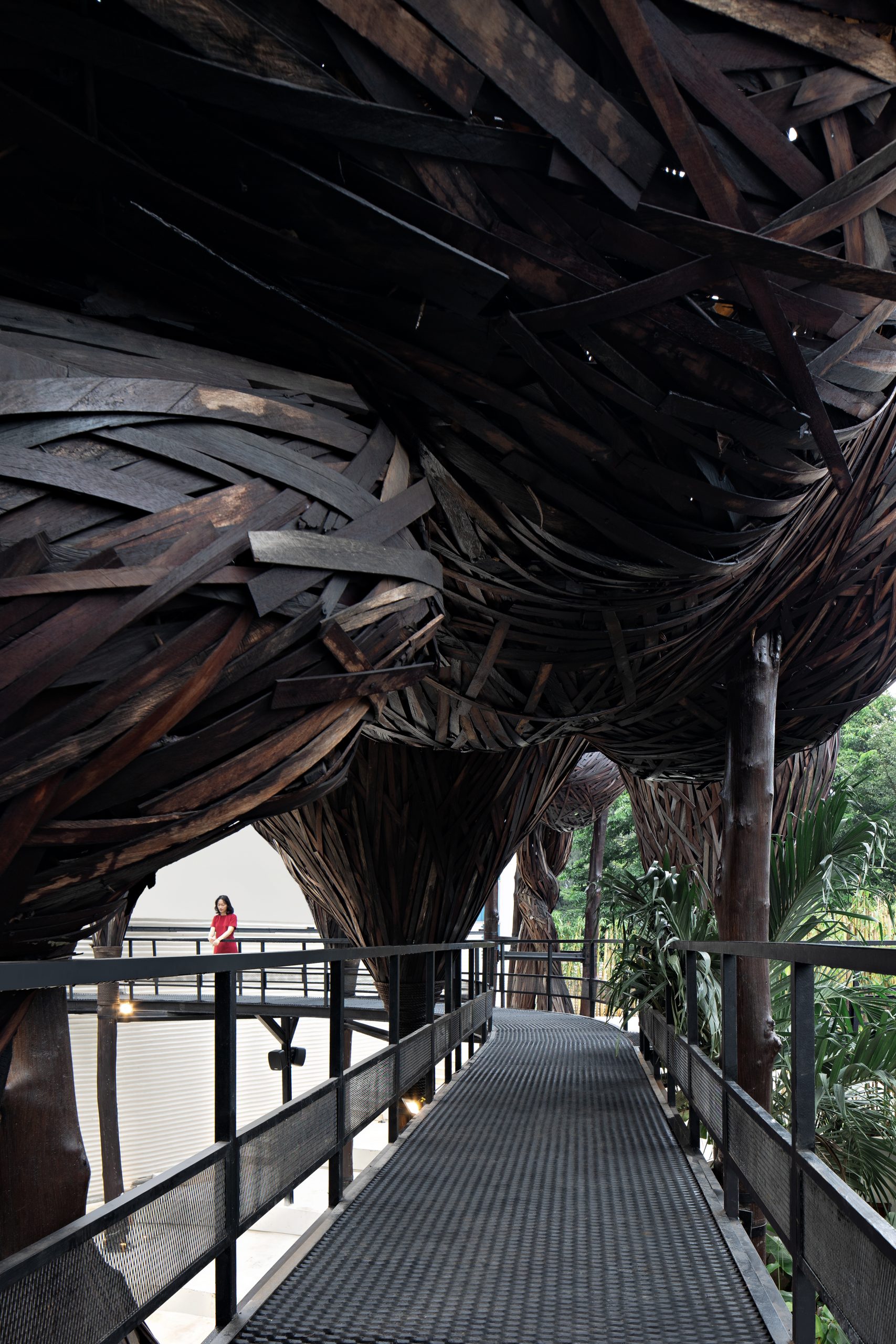

On the way, an 800-square-meter reflecting pool provides a focal point in the scenery, bringing joy, pleasure and contentment in nature’s peaceful embrace. Interestingly enough, tiers of seats similar to a sports arena are added to the mix in a way that’s proper in the circumstances.


In addition to being a rendezvous for good food and drinks, Tanatap Wall Garden offers an enormous richness of nature-inspired outdoor rooms for those who love spending time indulging in music and live stage performances.
Keeping to its original concept, an amphitheater is put in for customers who appreciate dramatic works as a genre of literature and expression of ideas encouraging participation in the discourses of society. All of these features are neatly integrated in one cohesive design aesthetic.

In short, it’s a metamorphosis of purpose that results in neat and clean white walls transforming into a stunning commercial space, in this particular case, a trio of restaurant, café and bar set amidst a verdant oasis.


Drop by Tanatap Wall Garden for a drink or two next time you sojourn in Central Java. It’s an opportunity to experience the beauty of architecture and nature coming together in one indivisible design.
Architect: RAD+ar
Principal Architect: Antonius Richard
Sculpture Artist: Wisnu Ajitama
You may also like…
 Stalk Jakarta, the Tree-Hugger Bar: A Restaurant and Bar That Cares about the Environment
Stalk Jakarta, the Tree-Hugger Bar: A Restaurant and Bar That Cares about the Environment
 Tanatap Ring Garden Coffee Shop: A Design Experiment on the Interaction between Commercial Space and Nature
Tanatap Ring Garden Coffee Shop: A Design Experiment on the Interaction between Commercial Space and Nature








